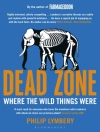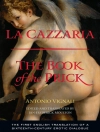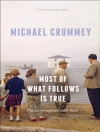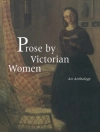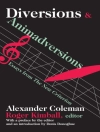Recent years have seen the strong development of Neo-Victorian studies, including its theorisation by such scholars as Cora Kaplan, Sally Shuttleworth, Ann Heilmann, Christian Gutleben, Marie-Louise Kohlke, Mark Llewellyn and others. It is a focus that has engaged literary critics from around the globe like Carmen Veronica Borbély (Romania), Susanne Gruß (Germany), Tiffany Gagliardi Trotman (Spain), Hitomi Nakatani (Japan), Agnieszka Matysiak (Poland), Max Duperray (France), Jeanne Ellis (South Africa) and Van Leavenworth (Sweden) to name just a few. [NP] ‘Neo-Gothic Narratives’ defines and theorizes what, exactly, qualifies as such a text, what mobilises the employment of the Gothic to speak to our own times, whether nostalgia plays a role and whether there is room for humour besides the sobriety and horror in these narratives across various media. What attracts us to the Gothic that makes us want to resurrect, reinvent, echo it? Why do we let the Gothic redefine us? Why do we let it haunt us? Does it speak to us through intertexuality, self-reflectivity, metafiction, immersion, affect? Are we reclaiming the history of women and other subalterns in the Gothic that had been denied in other forms of history? Are we revisiting the trauma of English colonisation and seeking national identity? Or are we simply tourists who enjoy cruising through the otherworld? The essays in this volume investigate both the readerly experience of Neo-Gothic narratives as well as their writerly pastiche.
Tabela de Conteúdo
Acknowledgements; Introduction Neo- Gothicism: Persistent Haunting of the Past and Horrors Anew, Brenda Ayres and Sarah E. Maier; Chapter One “Through a glass darkly”: The Gothic Trace, Brenda Ayres; Chapter Two Dark Descen(den)ts: Neo- Gothic Monstrosity and the Women of Frankenstein, Sarah E. Maier; Chapter Three Theorising Race, Slavery and the New Imperial Gothic in Neo- Victorian Returns to Wuthering Heights, Carol Margaret Davison; Chapter Four Toxic Neo- Gothic Masculinity: Mr. Hyde, Tyler Durden and Donald J. Trump as Angry White men, Martin Danahay; Chapter Five Shadows of the Vampire: Neo-Gothicism in Dracula, Ripper Street and What We Do in the Shadows, Jamil Mustafa; Chapter Six “Here we are, again! ”: Neo-Gothic Narratives of Textual Haunting, from Peter Ackroyd’s Dan Leno and the Limehouse Golem to The Limehouse Golem, Ashleigh Prosser; Chapter Seven Spectral Females, Spectral Males: Coloniality and Gender in Neo- Gothic Australian novels, Kate Livett; Chapter Eight “We Are all humans”: Self- Aware Zombies and Neo- Gothic Posthumanism, Karen E. Macfarlane; Chapter Nine Neo- Gothic Dinosaurs and the Haunting of History, Jessica Gildersleeve and Nike Sulway; Chapter Ten Doctor Who ’s Shaken Faith in Science: Mistrusting Science from the Gothic to the Neo- Gothic, Geremy Carnes; Chapter Eleven The Devil’s in It: The Bible as Gothic, Brenda Ayres; Notes on Contributors; Index.
Sobre o autor
Sarah E. Maier is professor of English and comparative literature at the University of New Brunswick. Canada, and was named University Teaching Scholar in 2006. She has been working on the Brontës for the bicentennials including for The Lost Manuscripts (2018). Maier’s past work includes Reinventing Marie Corelli for the Twenty-First Century (2019), co-edited with Brenda Ayres. Her other current interests include Sherlock Holmes, Neo-Victorian vampires, adaptation and Neo-Victorian young adult fiction.
Brenda Ayres is professor of English teaching a wide array of English online courses through Liberty University and Southern New Hampshire University, USA. She has edited several collections of essays including Reinventing Marie Corelli for the Twenty-First Century (2019) with Sarah E. Maier, Victorians and Their Animals: Beast on a Leash (2018) and Biographical Misrepresentations of British Women Writers: A Hall of Mirrors and the Long Nineteenth Century (2017). She is the author of Betwixt and Between: The Biographies of Mary Wollstonecraft (2017).



